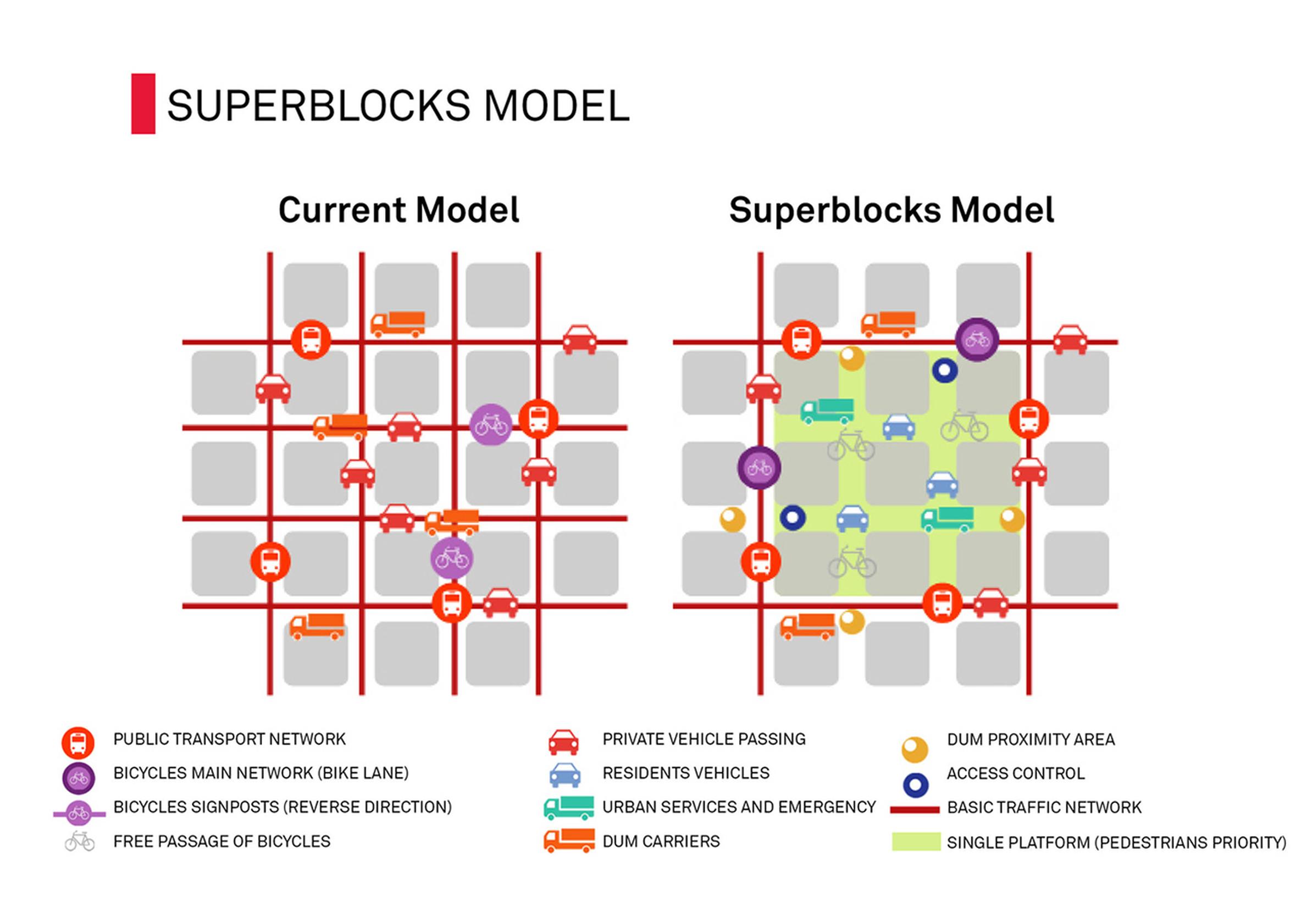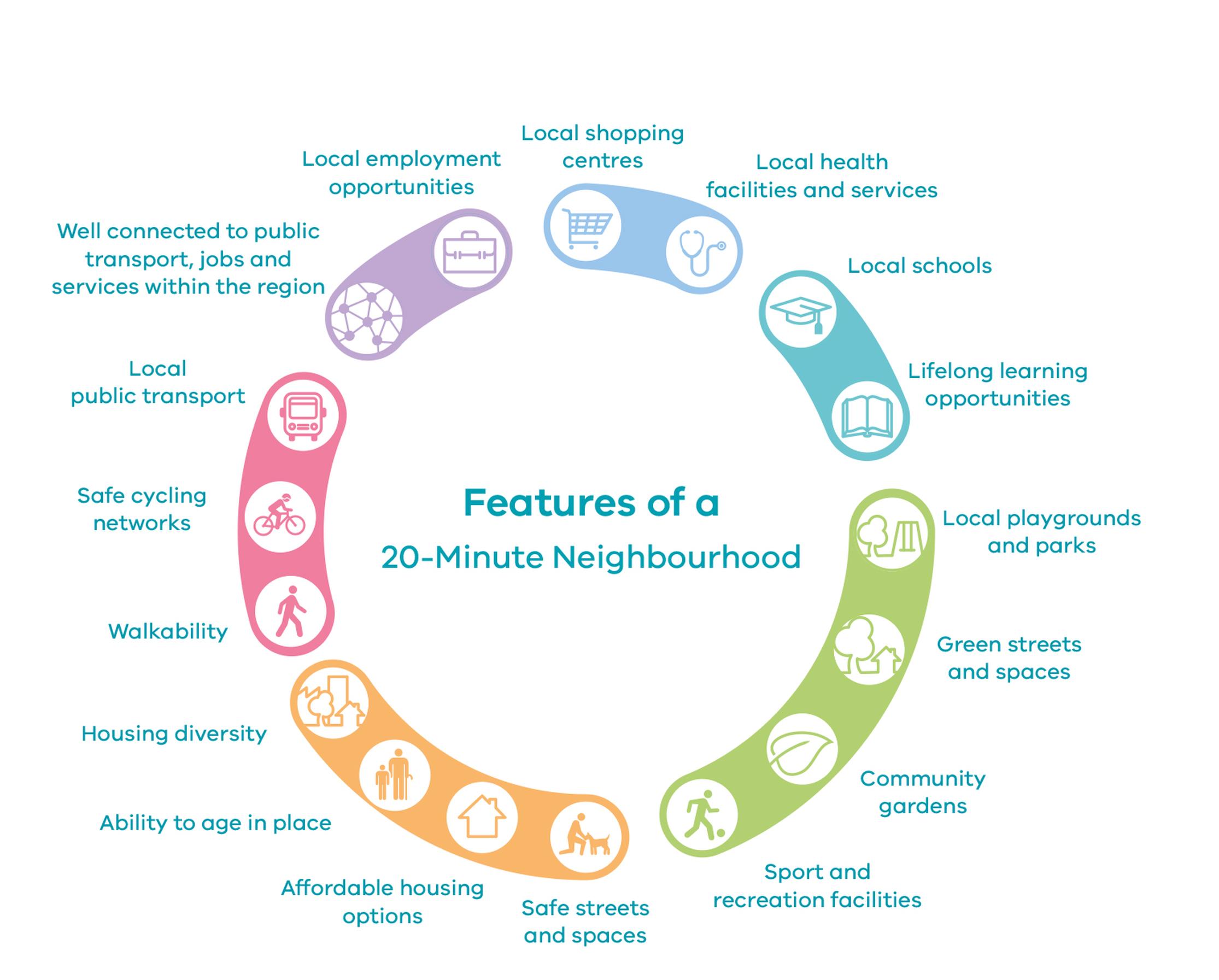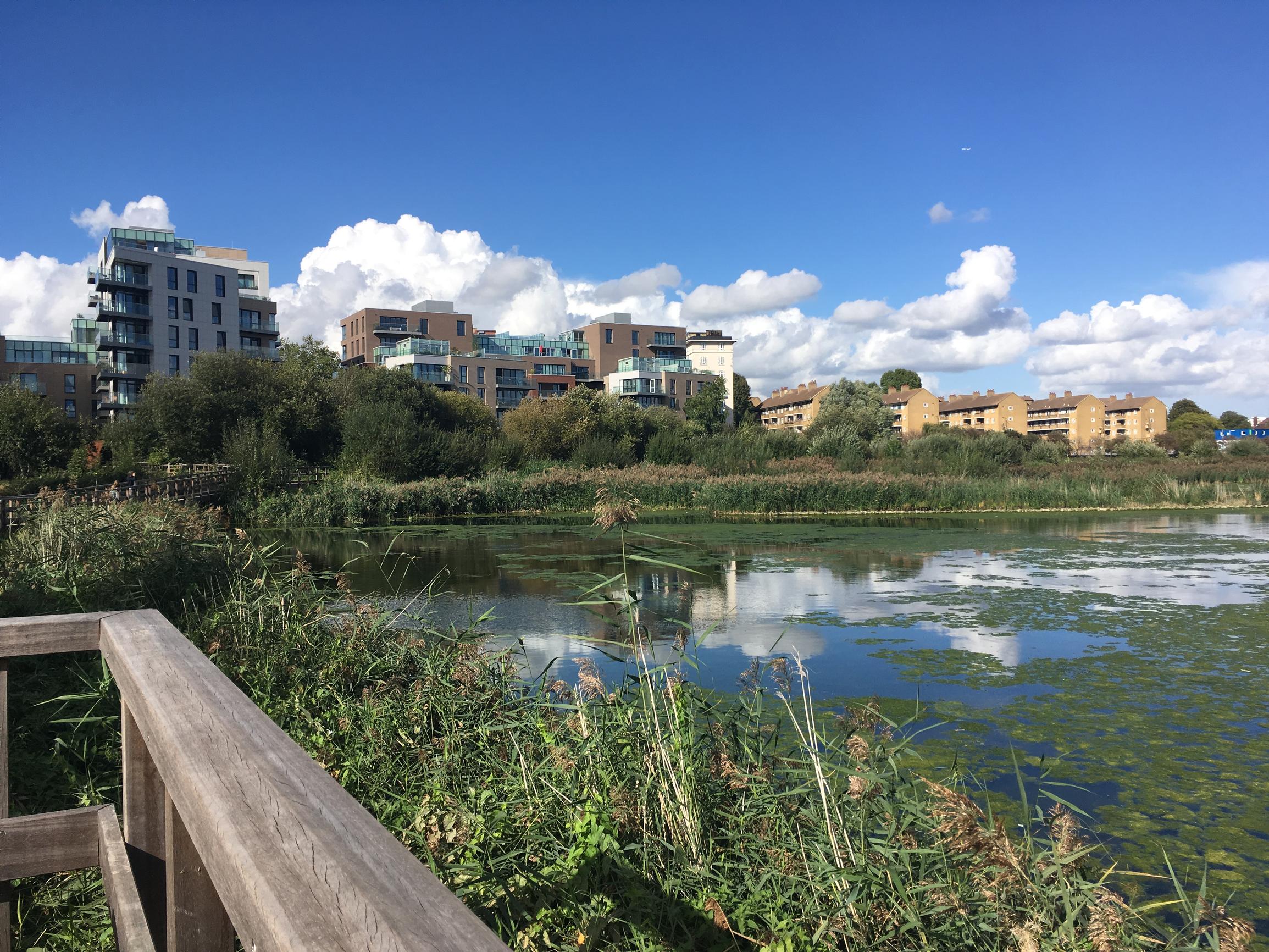



Compact centres are back on the agenda. They may be described as 5, 15 or 20 minute neighbourhoods or cities – and, as ever, the more popular the concept gets, the more variants are proposed and discussed (the most compact version of this theme I’ve come across so far is the Swedish ‘Street Moves’ 1 minute neighbourhood, which advocates hyperlocal attention to the participatory design of every street). There are many models: intensification, densification, proximity or compactness, the intent is to bring the necessities of life within easier reach of residents without having to spend lots of time travelling or building expensive new infrastructure.
The common idea is to create a locality in which most day-to-day needs can be met within a 15 (or 5, or 20) minute walk or cycle from home, and with good transport connectivity, public transport options and digital links as part of the mix. For the sake of simplicity, I’m going to use the term 15 minute centres in this article. The concept is an ancient one: densely-built European cities have always taken a similar approach to their urban cores, and it was back in the 1920s that American urban planner Clarence Perry proposed the idea of the liveable ‘neighbourhood unit’.
With Paris currently leading the way, cities around the world have been enticed by this model for resilient communities. Melbourne, Madrid, Barcelona, Milan, Ottawa and Seattle are among those working on similar plans.
Paris’ Sorbonne Professor Carlos Moreno is the latest advocate of ‘the creation of a city of neighbourhoods’. Moreno sees 15 minute centres as a contemporary response to climate crisis and the pandemic, both of which have kick-started a trend toward localism. The pandemic showed us how important social links are, he said in a TED talk last year. “For too long, those of us who live in cities big and small have accepted the unacceptable. Have you ever stopped to ask yourself: why does a noisy and polluted street need to be a noisy and polluted street? Just because it is? Our acceptance of the dysfunctions and indignities of modern cities has reached a peak.” Each neighbourhood should fulfil six social functions, says Moreno: living, working, supplying, caring, learning and enjoying. Flexibility is key to Moreno’s thinking: flexibility is “a golden rule of the 15 minute centre. Every square metre that’s already built should serve many different purposes”.
Anne Hidalgo, the mayor of Paris, has appointed Carine Rolland as commissioner for the Parisian version of the 15 minute centre, aiming to create ‘a city of proximities’ between structures, amenities and people. Proximity planning is a useful term for what is taking place, coined recently by Randall Ghent, transport solutions manager at North Lincolnshire Council. “If transport planning seeks to facilitate the movement of people and goods from A to B, and urban design seeks to make A and B more attractive places, then what is the discipline seeking to bring A and B closer together,” he asks? Proximity planning was his suggestion.
Many local authorities have taken their first steps in ‘proximity planning’ with the delivery of schemes to reallocate road space in favour of active modes, as well as creating Low Traffic Neighbourhoods, School Streets, Healthy Streets and, in London, Mini-hollands. One of the basic requirements of a 15 minute centre surely has to be the option of accessing local amenities safely and easily on foot or by bike. When such accessibility happens, neighbourhood amenities blossom. Minneapolis planner Paul Mogush succinctly describes this as “putting the stuff closer together so it’s easier to get to the stuff”.
The problem with many cities, he adds, has been that they have been putting the ‘stuff’ ever farther apart, and then building ever-bigger networks of roads to connect it. Ian Mulcahey, urban planner at design and architecture firm Gensler, suggests that this situation has resulted in most of us spending time in two 15 minute villages, the one in which we live, and the one in which we work.
In future, however, he expects these two villages to increasingly merge.The answer, many agree, is to ‘thicken up’ existing neighbourhoods instead of expanding outwards.
Back in the early 2000s, England used a National Indicator Set, which included NI 175: Access to services and facilities by public transport, walking and cycling. Planning policy at the time suggested that the indicator must be included in Local Transport Plans. In 2010, there was a change in the local performance framework across Whitehall, bringing an end to Local Area Agreements and the National Indicator Set, with the result that local authorities no longer needed to consider NI 175.
Dan Saunders, head of products, Basemap, remembers those days. “Years ago, local councils had robust transport accessibility plans, and it would be good to see these being used again. Lots of our clients ask for such data, which is why we are carrying out a series of 20 minute city accessibility mapping studies,” he says.
In Barcelona, where ‘superblocks’ define essential 15 minute centres, a nod to community engagement aligned with neighbourhood authority has seen in-home businesses, food trucks, farmers’ markets, and pop-up shops grow apace, all of which contribute greatly to neighbourhood accessibility and cohesion. As Barcelona shows, a 15 minute centre may be dense but, more importantly, it needs to be fine-grained and mix homes, schools, social amenities, businesses and public spaces. Walkability is key, as are relatively low-cost neighbourhood additions such as pocket parks, street trees, bike share schemes, mobility hubs and communal work spaces.
Cities, towns and neighbourhoods are complex, and planners have never been short of views on managing this complexity. Throughout the early and mid 1990s, there was widespread faith in the compact city model’s ability to provide urban sustainability. But what about densities in rural areas, which are often low? Can the principles of a 15 minute centres be applicable within a rural environment, and perhaps even provide a solution to post-pandemic migration to rural areas? And what about equity, resilience, opportunity and innovation?
Darryl Chen, partner and head of urban at Hawkins/Brown, feels that the 15 minute is ‘anti-urban’ and does a disservice to the very idea of the city. He recently wrote: “The 15 minute city forgets the very dynamics that make cities successful and attractive as places of personal opportunity and fulfilment. What we see instead are the compound benefits of agglomeration, specialisation and social diversification that comes when these villages – and their inhabitants - interact with each other.” Even Valerie Pecresse, president for the Ile de France, Greater Paris region, says that “not all people have the possibility of having jobs within 15 minutes”.
Hélène Chartier, Head of Zero Carbon Development, C40 Cities (a city-led coalition focused on promoting resilience), notes that there are many myths and misinterpretations about the 15 minute concept.
It’s not about being ‘stuck’ in any one neighbourhood, she says, and no-one is suggesting that 15 minute centres don’t need continuing investment in good onward public transport connections, active travel schemes and digital infrastructure.
“The 15 minute concept is about a set of principles. There is no one-size-fits-all approach. Some cities and centres focus on mobility, some on social equity, some on housing. But it's a wide range of principles that come together to make a successful 15 minute city.” C40 is, she adds, focused on sharing insights from the cities that are making good progress across all elements of the mix.
These contradictory views raise significant questions for decision-makers and transport planners. Are the huge sums being spent on HS2 and the UK’s 27 billion roads plan compatible with a popular swing towards localism, and a focus on access to local amenity and opportunity rather than speed of travel, especially now that working and living patterns have been significantly – and permanently – disrupted. Is proximity planning just another framework that values speed over access? Can it offer insights into key issues such as the overall demand for travel, and whether town and peri-urban centres replace urban cores as desirable places to work, as well as to live?
Several urban thinkers have also reflected on potential spatial inequalities, and whether 15 minute could exacerbate these. Could they worsen social divides, widening inequalities between poorer and richer districts? Do we know enough about the socio-economic and health implications of narrowing the travel patterns of residents in already disadvantaged areas, which may have limited access to desirable green spaces, services and jobs?
The answer to potential inequalities, according to C40 Cities, is to focus first on the neighbourhoods that need the most. Flavio Coppola of C40 Cities, based in New York City, says: “I agree there is a risk. But our idea of 15-minute cities is about access and sustainability. It’s an opportunity to use a paradigm for change.”
There are those embracing such change. Says Emily Walsh, associate director, SYSTRA: “Neighbourhoods need fine-grained and diverse layers of services and facilities. These are complex, but I don't see why this applies only to affluent areas. I am involved in work in Solihull, just north of where the first HS2 station will be. It’s an area that has been deprived for years, and suffers from severance.
“The project is re-connecting the street network, with local centres now accessible to their communities, and to the town centre. That’s the 15 minute model and, although it requires public sector money, time and investment, I don't see why it can’t work in a whole range of areas.”
Transport and urban planning are high on the Government agenda right now. The details of a planning overhaul were introduced via the Planning Bill this week, following the publication of the White Paper Planning for the Future last year.
At the heart of government proposals is a ‘complete rethink’: the introduction of a ‘zonal’ planning system, that would see permission granted automatically on sites that have been selected for development.
Under the new system, local authorities will manage three categories: growth, renewal and protection. Growth areas will be categorised as suitable for ‘substantial development’, with permission being granted automatically where local plan requirements are met. Design codes will ‘reflect local character’. The reforms have been designed to raise housebuilding levels, and as an answer to the problem of home ownership in particular. Ivan Tennant, an economic planner at GL Hearn, notes that the word ‘rent’ only appears once in the White Paper. Also, the role of local authorities in delivering sustainable transport links for new developments in the new planning framework are crucial, but are approached only from a funding perspective. This is something that has generated criticism from many quarters, especially where new development is concerned.
Most recently, 10 organisations have written to Housing Secretary Robert Jenrick urging changes to the proposed reforms to “avoid adding a tide of car traffic to already overcrowded roads and undermining the Government’s wider social, economic and environmental goals”. If such development were to be delivered, this would be the antithesis of the 15 minute concept.
Organisations including CPRE, RAC Foundation, Sustrans and the Transport Planning Society have stated that new housing is being sited in places that cannot be served well by public transport, are inaccessible on foot or cycle and often have few or no local facilities. The design and layout of many developments inhibit walking, cycling and bus service provision; some developments have no pavements. Jenny Raggett, coordinator of Transport for New Homes, which organised the letter, said: “Our research shows that future lifestyles are being built around the car. The Government’s planning reforms are an opportunity to address this.”
For leaders with vision, 15 minute thinking offers a very useful framework to help town, suburban and urban centres meet the current needs of local people. Even advocate Moreno admits that the transition will not be straightforward, but says that some key goals are already in place for Paris, such as making every street cycle-friendly by 2024.
“The 15-minute centre is not a silver bullet,” he says. “Our neighbourhoods are segregated into zones of rich, poor, middle class, workers, bars, offices. But 15-minute thinking can focus on the common good. With enough funding and support, and deployed in the right way, we can rethink cities around four guiding principles: ecology, uteproximity, solidarity and participation. Definitely food for thought as we plan for a new normal.”
Two free webinars exporing these topics will be run on 18 and 20 May. To register, visit: https://www.transportxtra.com/tx-events/
TransportXtra is part of Landor LINKS
© 2025 TransportXtra | Landor LINKS Ltd | All Rights Reserved
Subscriptions, Magazines & Online Access Enquires
[Frequently Asked Questions]
Email: subs.ltt@landor.co.uk | Tel: +44 (0) 20 7091 7959
Shop & Accounts Enquires
Email: accounts@landor.co.uk | Tel: +44 (0) 20 7091 7855
Advertising Sales & Recruitment Enquires
Email: daniel@landor.co.uk | Tel: +44 (0) 20 7091 7861
Events & Conference Enquires
Email: conferences@landor.co.uk | Tel: +44 (0) 20 7091 7865
Press Releases & Editorial Enquires
Email: info@transportxtra.com | Tel: +44 (0) 20 7091 7875
Privacy Policy | Terms and Conditions | Advertise
Web design london by Brainiac Media 2020